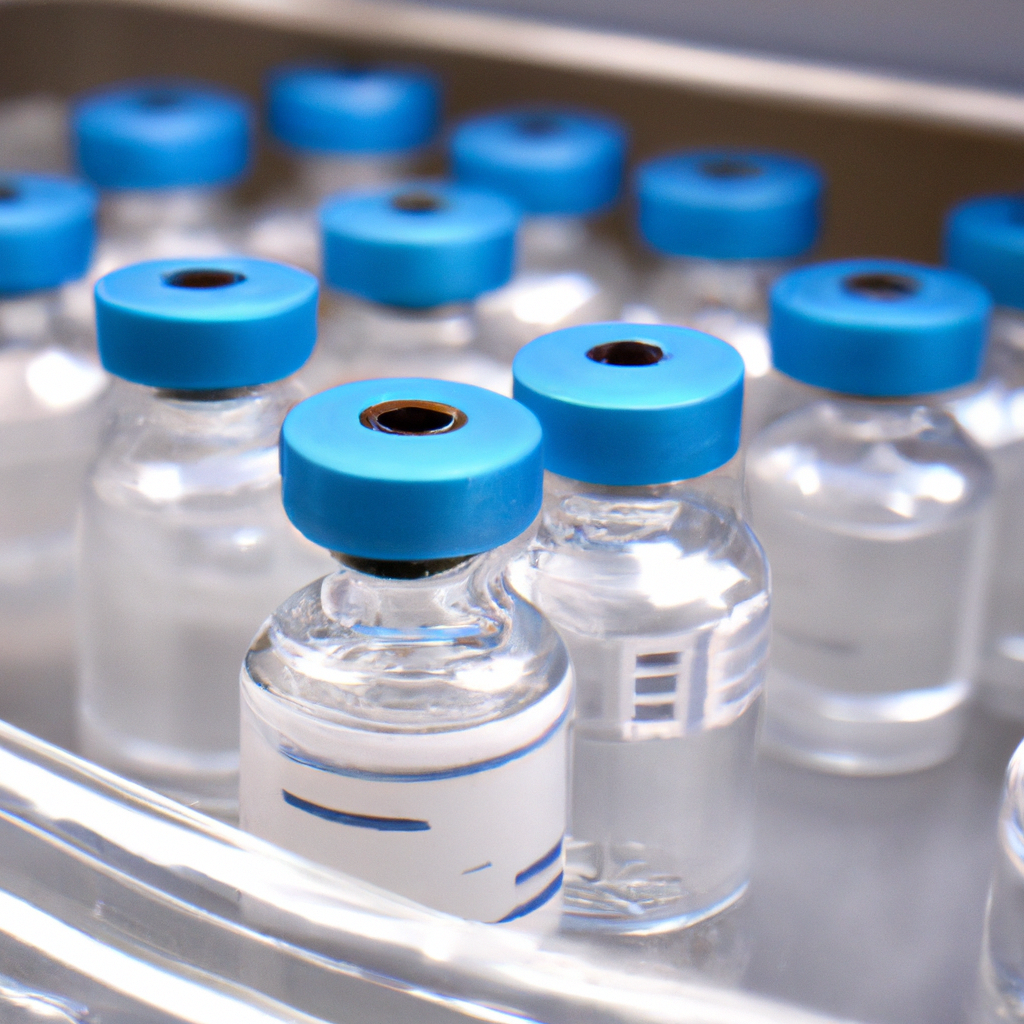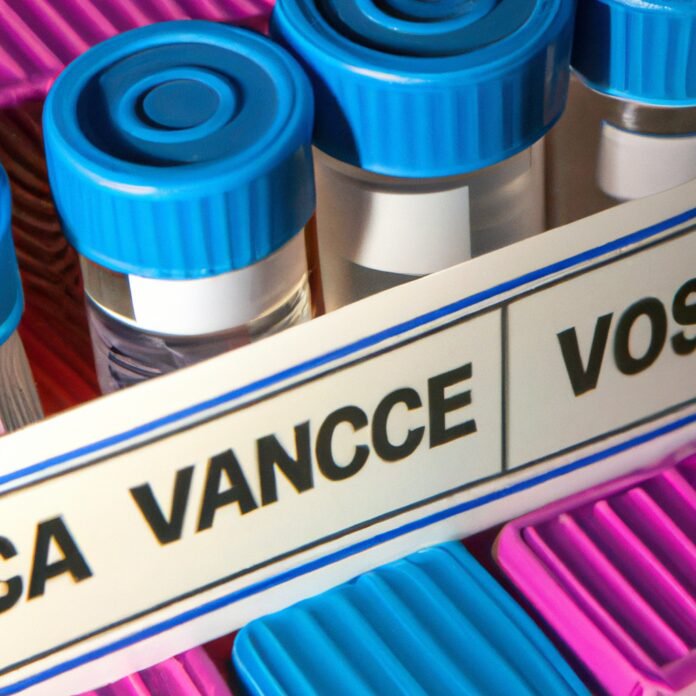As the world races against the clock to defeat the COVID-19 pandemic, the efficacy and safety of vaccines have become increasingly crucial. While a vaccine rollout is taking place on a global scale, there is a pressing need to ensure that these life-saving doses are correctly stored and handled. The management of vaccine storage and handling is a complex process that demands extreme attention to detail. This article aims to explore the importance of vaccine storage and handling, and how it plays a vital role in maintaining the efficacy and safety of vaccines, ultimately protecting public health.
1. Storing Vaccines: A Critical Component of Public Health Strategy
The Importance of Proper Vaccine Storage
Proper vaccine storage is crucial to the success of any public health strategy involving vaccines. Improper storage can lead to vaccine wastage, reduced potency and efficacy, and even harm to patients. Providing the right conditions for vaccine storage ensures that vaccines will be effective and safe for use in immunization programs.
One of the essential aspects of proper vaccine storage is maintaining an appropriate temperature range. This means that vaccines must be kept within a specific temperature range, usually between 2°C to 8°C, to ensure their stability and potency. Deviations from this range can cause vaccines to become ineffective or even harmful, which is why special refrigerators and freezers are used to store them.
Another critical component of vaccine storage is proper handling and transportation. Vaccines must be safely transported to their destination and stored immediately upon arrival. Appropriate handling techniques include avoiding shaking vaccines, ensuring that labels remain intact, and avoiding exposure to light, which can reduce vaccine potency.
Inadequate vaccine storage practices can compromise public health efforts to combat infectious diseases. Therefore, it is essential to ensure that vaccines are stored and handled correctly to ensure their optimal efficacy and safety. By maintaining strict vaccine storage standards, we can help protect individuals, communities, and populations from vaccine-preventable diseases.
2. From Hospital Cooling Rooms to Rural Clinics: Equitable Distribution of Vaccines
With the COVID-19 pandemic affecting countless people across the globe, the distribution of vaccines has proven to be a vital challenge. However, there are many places where vaccines need to be distributed in order to effectively address the pandemic. One of these places is in hospitals, where patients receive treatment for COVID-19 and other medical conditions.
Hospital cooling rooms have been transformed into storage areas for vaccines as part of a broad push for equitable distribution. This has been achieved by leveraging technology to ensure that vaccines can be stored and transported. With sophisticated refrigeration and cooling systems, vaccines can be kept at the appropriate temperature from distribution to administration.
Another critical aspect of equitable distribution of vaccines is ensuring that rural and underserved communities have access to them. This is necessary because these communities often have less infrastructure and resources than more populated areas. To achieve this goal, there are a number of strategies that can be employed.
One approach is to establish mobile vaccination clinics that can travel to rural communities. This not only helps to distribute vaccines but also provides outreach and education on the importance of vaccination. Additionally, partnerships with community organizations such as churches and community centers can help to distribute vaccines and address vaccine hesitancy.
In conclusion, the equitable distribution of vaccines is a multifaceted challenge that requires innovative solutions. From transforming hospital cooling rooms to establishing mobile vaccination clinics and partnering with community organizations, there are many ways to ensure that vaccines are distributed fairly and reach all communities.
3. Temperature Monitoring and Maintenance: Key Factors in Ensuring Vaccine Efficacy
Regular monitoring and maintenance of temperature plays a crucial role in ensuring the potency of vaccines. It is important to maintain the recommended temperature range throughout the entire vaccine storage and distribution lifecycle to maximize its efficacy and avoid wastage.
Key factors in temperature monitoring and maintenance include investing in quality storage facilities and equipment, implementing temperature monitoring systems, and training staff on proper handling and storage procedures.
Investing in quality storage facilities and equipment such as refrigerators, freezers, and temperature monitoring devices is essential to maintain the recommended temperature range. These facilities and equipment should be regularly calibrated and serviced by certified technicians to ensure accurate temperature control.
In addition, implementing temperature monitoring systems is crucial in maintaining the efficacy of vaccines. These systems include temperature monitoring devices that provide real-time data on the temperature inside the storage facility or equipment. Staff should also be trained on proper handling and storage procedures, such as stocking and rotating vaccines correctly, and checking for temperature variations regularly.
In summary, temperature monitoring and maintenance are critical factors in ensuring the efficacy of vaccines. It’s essential to invest in quality storage facilities and equipment, implement temperature monitoring systems, and train staff to ensure proper handling and storage procedures. By doing so, we can protect the potency of vaccines and ensure their effectiveness in preventing diseases.
4. Managing Vaccine Waste: Minimizing Losses and Maximizing Resources
When it comes to vaccine management, minimizing waste and maximizing resources is crucial. Here are some tips for managing vaccine waste in an efficient manner:
-Track your inventory: Keep a record of vaccine expiration dates and make sure to use the vaccines that expire first.
-Use a first-in, first-out approach: This ensures that the oldest vaccines are used first before they expire.
-Optimize vaccine transport: Vaccines are sensitive and need to be transported carefully to avoid damage and spoilage. Make sure to keep them at the optimal temperature during transport.
-Train staff in waste reduction techniques: Proper training will help staff to be cautious and avoid vaccine waste by handling them with care.
In addition, there are ways to maximize the resources that you already have. Here are some ideas:
-Use vaccine management software: This can help track inventory, expiration dates, and make sure that all vaccines are being used.
-Partner with other organizations: This can help you share resources and reduce waste.
-Follow the 3 R’s: Reduce, Reuse, and Recycle. Consider ways to reduce the amount of packaging used when transporting vaccines, and recycling wherever possible.
All in all, managing vaccine waste and maximizing resources is beneficial not only for the healthcare industry but also for the environment. By implementing sustainable practices and being cautious, we can reduce our carbon footprint while simultaneously providing better care for those in need.
5. Responding to Emergencies: Preparedness for Unforeseen Circumstances
In today’s unpredictable world, it’s essential to be ready for any emergency that may arise. Being prepared is the key to ensuring the safety of yourself and those around you. Here are a few tips to help you be prepared for any unforeseen circumstances.
1. Create an Emergency Kit
Having an emergency kit can make all the difference during a crisis. The kit should include essential items such as a first aid kit, emergency food and water supplies, and a flashlight. Make sure to check and replace supplies regularly to ensure they are up to date.
2. Learn Basic First Aid
In any emergency, injuries are likely to occur. Knowing basic first aid can help you respond quickly and appropriately. Consider taking a first aid class to familiarize yourself with the basics, such as bandaging wounds, administering CPR, and handling broken bones.
3. Have an Emergency Plan
It’s essential to have a plan in place in case of an emergency. This plan should include evacuation procedures, communication methods, and meeting places for you and your loved ones. Practice the plan with your family to ensure everyone knows what to do in case of an emergency.
4. Stay Informed
Keeping up to date with news and weather reports can help you stay informed of potential emergencies. Listening to emergency broadcasts and alerts can also help you take action quickly to keep yourself and those around you safe.
By following these tips and taking action now, you can be prepared for any emergency that may occur. Remember, being prepared is the best way to protect yourself and your loved ones.
6. Don’t Let Mishandling Ruin the Benefits of Vaccination: Training Programs for Healthcare Workers
In order to ensure the full benefits of vaccinations are realized, it is imperative that healthcare workers are properly trained in the handling and administration of vaccines. Mishandling of vaccines can result in decreased effectiveness, contamination, and even harm to patients. Thankfully, there are a variety of training programs available to healthcare workers to ensure proper vaccine handling and administration.
One such program is the Centers for Disease Control and Prevention’s (CDC) Vaccine Storage and Handling Toolkit. This toolkit provides comprehensive guidance on all aspects of vaccine handling, from proper storage to inventory management and disposal. It also includes helpful resources like temperature monitoring logs, vaccine handling checklists, and troubleshooting guides.
Additionally, many professional organizations offer trainings and certifications for healthcare workers in vaccine administration. For example, the National Vaccine Advisory Committee offers a Vaccine Administration Certification Program (VACP) for nurses and medical assistants. This program covers best practices in administering vaccines, as well as proper documentation and reporting.
By investing in these training programs and resources, healthcare workers can ensure that the full benefits of vaccinations are realized for their patients. Proper vaccine handling and administration not only improves outcomes for individuals, but also contributes to overall public health by preventing the spread of communicable diseases.
7. Consistency and Accountability: The Cornerstones of Vaccine Storage and Handling Policies
Maintaining proper vaccine storage and handling policies is crucial for ensuring the safety and efficacy of these life-saving medications. Two key elements that must be incorporated into any vaccine storage and handling policy are consistency and accountability.
Consistency in vaccine storage and handling policies means that the same procedures are followed every time vaccines are received, stored, and administered. This helps to ensure that vaccines are always kept at the required temperature and that they are not administered after their expiration date. Inconsistent policies can lead to errors that could compromise the effectiveness of the vaccine, leading to a negative impact on public health.
Accountability is also critical to vaccine storage and handling policies. This involves ensuring that everyone who handles vaccines is trained and fully accountable for their actions. Regular monitoring and audits must also be conducted to verify that the policies are being followed correctly, and any deviations should be immediately addressed to prevent future mistakes.
By incorporating consistency and accountability into vaccine storage and handling policies, healthcare providers can help to ensure that vaccines are administered safely and effectively. This is especially important in a world where new and emerging infectious diseases pose a constant threat. A well-designed vaccine storage and handling policy can help to protect public health and prevent illnesses that could otherwise have serious consequences.
Ensuring that vaccines are stored and handled properly is crucial to maintaining their efficacy and safety. From the moment they leave the manufacturer until they are administered to patients, vaccines must be closely monitored to ensure that they remain at the ideal temperature and are protected from light and other sources of damage.
Fortunately, with the right procedures and equipment in place, healthcare providers can ensure that every vaccine they administer is at peak potency and free from any risk of contamination or ineffectiveness. Whether it’s using specialized refrigerators, regularly checking temperatures, or establishing proper disposal protocols, there are many strategies that providers can use to keep vaccines safe and effective.
By following these guidelines and best practices, healthcare providers can continue to provide their patients with the highest quality care and protection against a wide range of infectious diseases. As we continue to rely on vaccines to keep ourselves, our loved ones, and our communities healthy, it’s reassuring to know that so many dedicated professionals are working tirelessly to ensure that these vital medicines remain safe, effective, and accessible to all.


